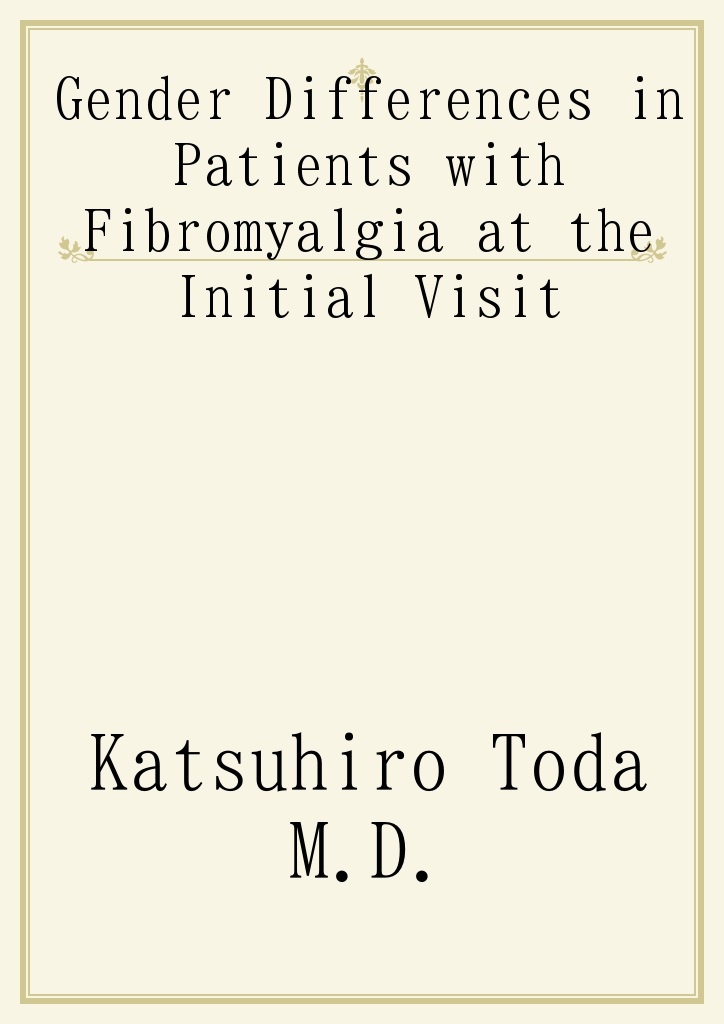Abstracts
Objective: Gender differences in patients with fibromyalgia (FM) were investigated.
Subjects: The number of tender points, number of control sites, the visual analog scale (VAS), global-VAS, face scale, short-form McGill pain questionnaire (SF-MPQ), self-rating depression scale (SDS), and Fibromyalgia Impact Questionnaire (FIQ) of both genders at the initial visit were compared. The Mann-Whitney U-test was performed in all analyses. P < 0.05 was considered significant.
Results: Ninety-one females and 21 males were studied. There were no significant differences between female and male patients in the number of tender points (13.9 vs 14.2), number of control points (2.6 vs 3.4), VAS (70.9 vs 77.2), global-VAS (52.7 vs 62.2), face scale (12.9 vs 13.8), SF-MPQ; S-PRI (17.1 vs 20.8), A-PRI (5.6 vs 6.7), T-PRI (22.8 vs 27.5), and present pain intensity (3.3 vs 3.8), SDS (53.4 vs 55.0), and FIQ (69.2 vs 79.9); however, the symptoms of male patients tended to be more serious than those of female patients.
Conclusions: Some studies show no significant gender differences or mixed results. Other studies show that males with FM reported more severe symptoms than females and vice versa. No gender differences were found in this study, but symptoms of male patients tended to be more serious than those of female patients.
Key words; Fibromyalgia; Gender differences; Symptoms
This book is free of charge. If you click “この本を開く“, you can download full text. Full text is in http://p.booklog.jp/book/79765/read.
